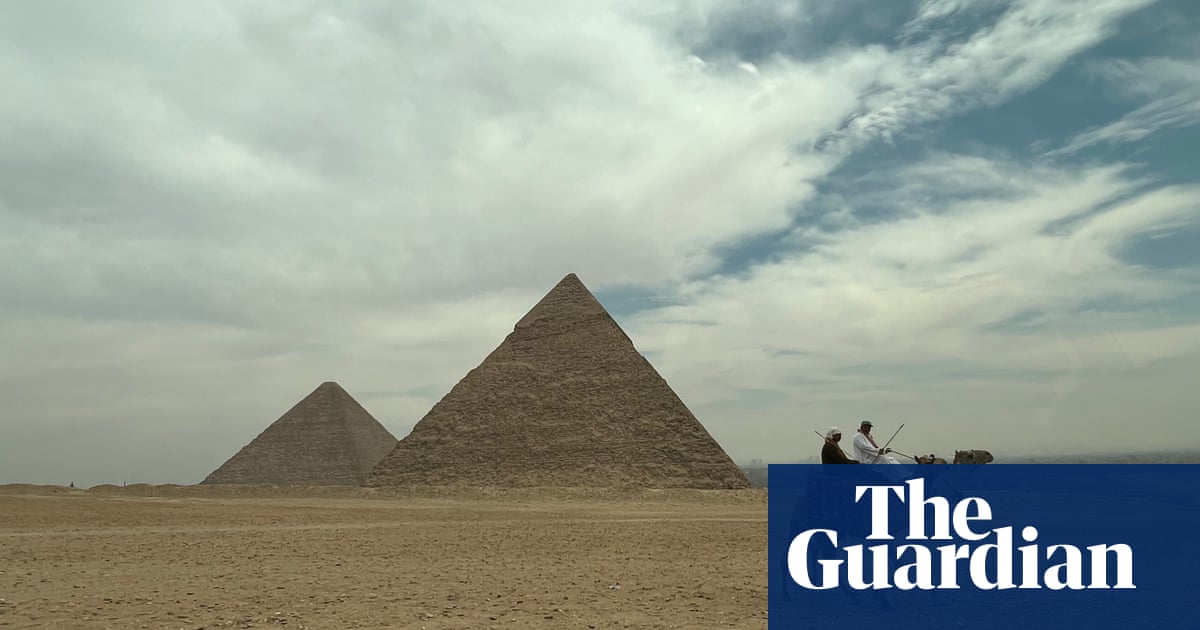This is the best summary I could come up with:
Scientists have discovered a long-buried branch of the Nile River that once flowed alongside more than 30 pyramids in Egypt, potentially solving the mystery of how ancient Egyptians transported the massive stone blocks to build the monuments.
The 40-mile-long (64km) river branch, which ran by the Giza pyramid complex among other wonders, was hidden under desert and farmland for millennia, according to a study revealing the find on Thursday.
“But nobody was certain of the location, the shape, the size or proximity of this mega waterway to the actual pyramids site,” said the lead study author, Eman Ghoneim of the University of North Carolina Wilmington in the US.
Radar gave them the “unique ability to penetrate the sand surface and produce images of hidden features including buried rivers and ancient structures,” Ghoneim said.
This indicates that the river played “a key role in the transportation of the enormous building materials and workmen needed for the pyramid’s construction”, she added.
These heavy materials, most of which were from the south, “would have been much easier to float down the river” than transport over land, the study co-author Suzanne Onstine of the University of Memphis said.
The original article contains 503 words, the summary contains 194 words. Saved 61%. I’m a bot and I’m open source!
I seriously doubt it; the extreme weight of these stones far exceeded the load capacity of any known Egyptian water craft. By, like, a lot.
You have a point, but consider:
- Wood doesn’t preserve well.
- It’s unlikely they used anything more than a crude raft to transport them.
- The wood from the raft was likely reused after they were done using it anyway.
Also, they recently discovered a written record from a crew that was transporting some of the stone by boat using artificial waterways that were dug near Giza and filled during the yearly flood of the Nile.
That’s promising! Got a link?
I think this is the one, the Merer diary about Akhet Khufu (their name for the pyramid) and the transport of stones by boat from known quarries.
https://en.wikipedia.org/wiki/Diary_of_Merer
The diary was found a good decade ago, it’s not even recent. This particular diary anyway, I don’t know about more recent discoveries about the waterways. I mean, beside OP’s article.
Thanks!
I have a hard time seeing a raft as having the necessary water displacement capability to handle that kind of weight, thought. And they left a written record regarding much smaller craft; so one obvious question, where’s the record of any more advanced ship building?
I guess it’s just the fact that it’s actually really not easy at all to get such enormous chunks of stone to float. But, I also cannot offer any other explanation, so take that as you will…
Ancient Aliens, duh :p
I thought about these two factors too, and they bug me.
Clearly there is a way to build a boat that can carry the equivalent of one of those massive blocks. It would have a massive amount of wood and some clever engineering. Whether they knew how or even if the waterways were deep enough for them to go through…
Could it be this was the technological leap that allowed the the big pyramids to be built, and why they stand so much taller than the others? Could it be the knowledge didn’t last long and whatever written record got lost to time? It’s a lot of conjecture.
Oh, I totally agree with your views here, I think. I guess it just bothers me whenever I see some “obvious” solution on some article or headline. The ones who built these monuments achieved something truly incredible, and we still can’t explain how they did so.



